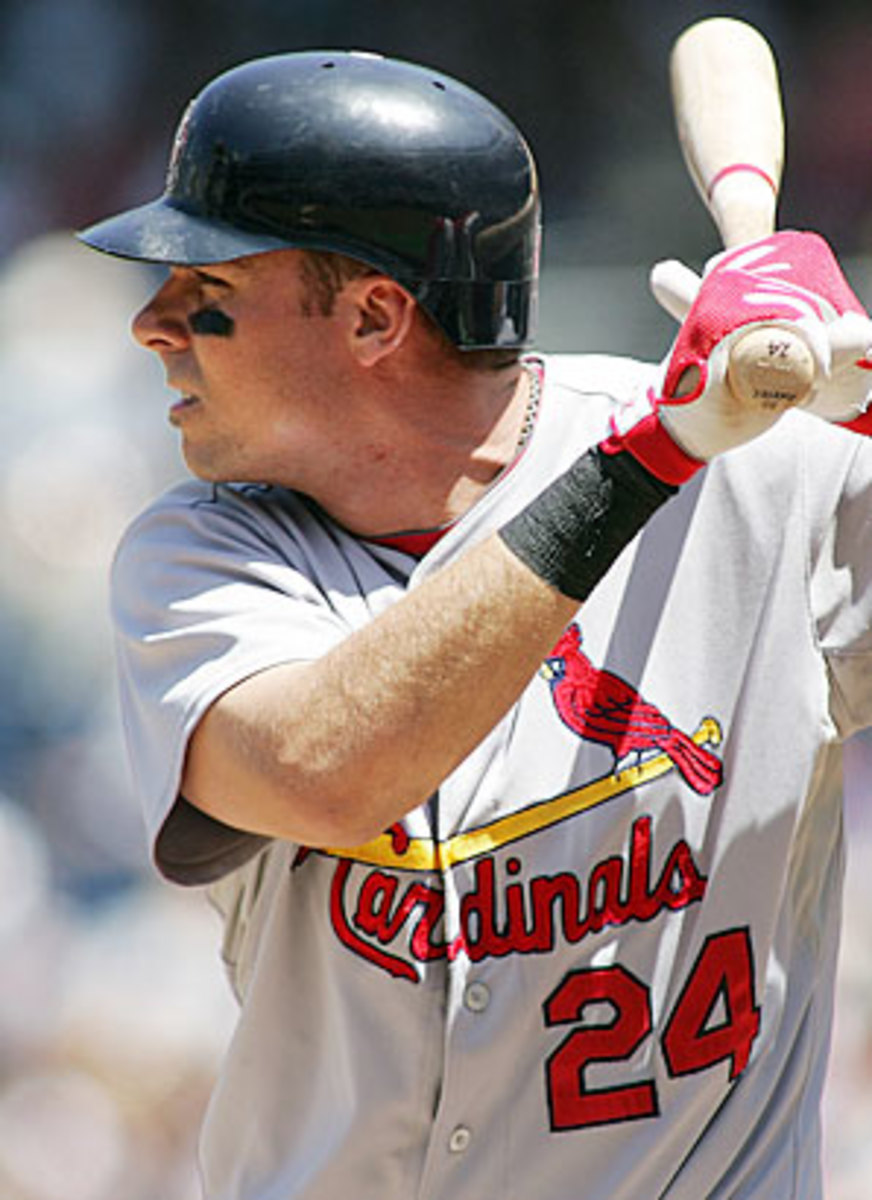Veteran busts in the making
On Thursday, we broke down the players who will benefit the most from joining a new team. Now for the other side of the coin: These guys are going to have a rough time in their new digs ...
Ankiel really shouldn't be on this list. Not because he's not going to have a miserable season, but because he shouldn't be relevant in fantasy leagues after last year's disaster. But name recognition keeps him in the minds of many owners, so here we are ... The move to Kansas City is basically the final nail in his fantasy value's coffin. Busch Stadium is anything but a homer haven, but Kauffman is even worse. The bigger problem is the downgrade in supporting cast. Of the 335 players who had 400-plus plate appearances over the past two seasons, Ankiel ranked 15th in percentage of plate appearances with runners on base (51.1). Now he joins a Royals team that posted a .318 on-base percentage last year, 26th-best in the majors. The plus is that the Royals don't have many options to threaten Ankiel, who is just as bad defensively in centerfield as he is offensively. But even in the unlikely event that he returns to 2008 form against the superior pitching of the A.L. (remember, he never had to face the best rotation in the N.L. while playing with the Cards), Ankiel's ceiling is probably around .260 with 25 homers, 70 RBIs and 60 runs in this lineup.
Garland's win totals (double digits in each of the past eight seasons) is what has given him fantasy appeal over the years. Good luck with that in San Diego. Garland's career run support average is 5.45. It was only 4.54 last season, leading to that disappointing 11-13 record. But the Padres gave their starters the worst run support in baseball last year (4.02). And if they trade Adrian Gonzalez, or can't find a spot in the lineup for Scott Hairston (who would be a defensive liability in centerfield), things would get even worse. Sure, the move to spacious Petco Park helps Garland a bit, but not that much considering Garland's groundball tendencies. And the Padres are a little weaker defensively than the D'backs and Dodgers. A repeat of last year's thoroughly mediocre line (11 wins, 4.01 ERA, 1.40 WHIP, 109 Ks) would seem to be a best case scenario for 2010.
Pineiro was one of the Dave Duncan benefactors in St. Louis, as Duncan taught him to pitch to contact and did wonders for his groundball rate. So leaving the Cardinals for any other team would be a red flag. But leaving for an American League team is a bigger red flag. The Angels provide a slight upgrade defensively (assuming Brandon Wood isn't a disaster at third), but that will be canceled out by the tougher lineups Pineiro will face. And one more thing to keep in mind: Figuring out the defensive value of catchers is an inexact science, but the metrics and the scouts are in agreement that Yadier Molina, Pineiro's former receiver, is one of the best, and Mike Napoli, Pineiro's current receiver, is one of the worst.
Ron Gardenhire was rumored to have cornered the market on crazy talk this winter, when he was positively giddy over the addition of Thome this offseason. The quote: "He looks like stinkin' Babe Ruth. He swings like Babe Ruth." Gardenhire added some lines about getting at-bats for all his DH/OF types, but common sense dictates that Thome is going to be almost exclusively a pinch-hitter unless someone gets hurt. With a rotation full of flyball pitchers, it's simply not feasible to play Jason Kubel in the field with any regularity. Thome will be lucky to get 300 plate appearances. Don't touch him unless injuries strike in Minny.
Yes, Vazquez is a little bit older and a little bit wiser than he was during his first stint with the Yankees in 2004 (when he went 14-10 but posted a 4.91 ERA). But the fact remains he's just a terrible fit in the bandbox called new Yankee Stadium. Turner Field is one of the least homer-friendly parks, and new Yankee is a launching pad for left-handed hitters. Vazquez isn't an extreme flyball pitcher, but he'll give up at least five more home runs this year. And there's the obvious comfort factor that comes from facing inferior National League lineups. Since 2000, Vazquez has spent six seasons (four with Montreal, one with Arizona, one with Atlanta) in the National League and four seasons in the A.L. (three with the White Sox, one in the Bronx). His N.L. ERA in that time was 3.65. His A.L. ERA: 4.52. Vazquez will benefit from the extra run support he'll get, but don't be surprised if his ERA balloons back into the 4s, knocking him from the elite ranks of fantasy pitchers.






































